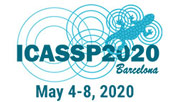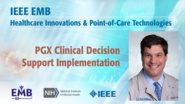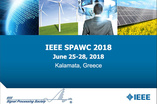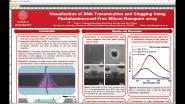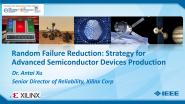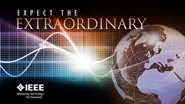10,347 resources related to
DNA
Read more
Featured Article
Read more
Top Conferences on DNA
2024 46th Annual International Conference of the IEEE Engineering in Medicine and Biology Society (EMBC)
2022 IEEE 22nd International Conference on Nanotechnology (NANO)
2022 IEEE Photonics Conference (IPC)
2022 IEEE 17th International Conference on Nano/Micro Engineered and Molecular Systems (NEMS)
ICASSP 2022 - 2022 IEEE International Conference on Acoustics, Speech and Signal Processing (ICASSP)
2021 IEEE/ACS 18th International Conference on Computer Systems and Applications (AICCSA)
2021 IEEE 16th Nanotechnology Materials and Devices Conference (NMDC)
2021 IEEE International Conference on Plasma Science (ICOPS)
2020 IEEE International Conference on Systems, Man, and Cybernetics (SMC)
2020 IEEE Nuclear Science Symposium and Medical Imaging Conference (NSS/MIC)
2020 IEEE 17th International Symposium on Biomedical Imaging (ISBI 2020)
2019 IEEE International Symposium on Information Theory (ISIT)
2019 IEEE Sensors Applications Symposium (SAS)
2019 IEEE 15th International Conference on Automation Science and Engineering (CASE)
2019 IEEE SENSORS
2019 Joint Conference of the IEEE International Frequency Control Symposium anEuropean Frequency and Time Forum (EFTF/IFC)
2019 IEEE International Conference on Electron Devices and Solid-State Circuits (EDSSC)
2019 IEEE International Ultrasonics Symposium (IUS)
2019 IEEE 6th Portuguese Meeting on Bioengineering (ENBENG)
2018 Fourth International Conference on Information Retrieval and Knowledge Management (CAMP)
2018 IEEE 31st International Symposium on Computer-Based Medical Systems (CBMS)
2018 IEEE 8th International Nanoelectronics Conferences (INEC)
2018 IEEE 26th Annual International Symposium on Field-Programmable Custom Computing Machines (FCCM)
2018 IEEE EMBS International Conference on Biomedical & Health Informatics (BHI)
2018 International Semiconductor Conference (CAS)
2018 IEEE/ACIS 17th International Conference on Computer and Information Science (ICIS)
2018 IEEE 8th International Conference on Computational Advances in Bio and Medical Sciences (ICCABS)
2017 IEEE 27th International Workshop on Machine Learning for Signal Processing (MLSP)
2017 13th International Conference on Natural Computation, Fuzzy Systems and Knowledge Discovery (ICNC-FSKD)
2017 IEEE International Conference on Bioinformatics and Biomedicine (BIBM)
2016 12th International Conference on Innovations in Information Technology (IIT)
2015 8th International Conference on Biomedical Engineering and Informatics (BMEI)
2015 9th ICME International Conference on Complex Medical Engineering (CME)
2014 International Conference on Nanoscience and Nanotechnology (ICONN)
2012 International Conference on Biomedical Engineering and Biotechnology (iCBEB)
2012 International Conference on Computer Science and Information Processing (CSIP)
2012 IEEE International Conference on Automation and Logistics (ICAL)
2012 International Conference on Enabling Science and Nanotechnology (ESciNano)
2011 Sixth International Conference on Bio-Inspired Computing: Theories and Applications (BIC-TA)
2011 7th International Conference on Networked Computing (INC)
2011 IEEE/NIH 5th Life Science Systems and Applications Workshop (LiSSA)
2011 International Conference on Nanoscience, Engineering and Technology (ICONSET)
2011 3rd Symposium on Web Society (SWS)
2011 3rd International Conference on Data Mining and Intelligent Information Technology Applications (ICMiA)
2009 2nd Microsystems and Nanoelectronics Research Conference (MNRC 2009)
2009 IEEE International Conference on Electro/Information Technology (eit2009)
2008 International Conference of Recent Advances in Microwave Theory and Applications (Microwave-08)
2007 IEEE Region 5 Technical, Professional and Student Development Workshop (TPS)
2006 International Conference on Microtechnologies in Medicine and Biology
More links



